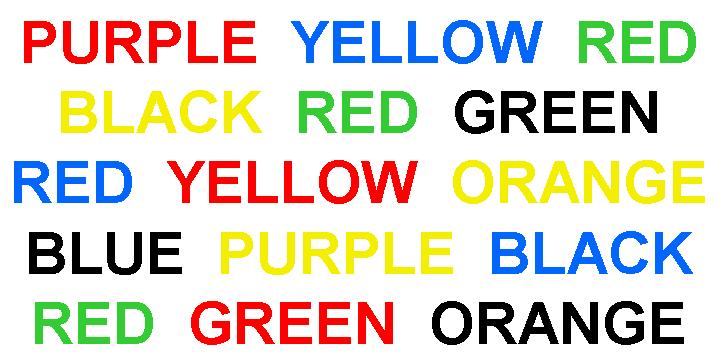
 As the mid-year exams loom, children will write tests to measure how much they remember what they have learned. Being able to concentrate in class is a critical step in the learning process and is fundamental for success at school. When a child struggles to concentrate, a worried teacher may approach parents to discuss types of intervention.
As the mid-year exams loom, children will write tests to measure how much they remember what they have learned. Being able to concentrate in class is a critical step in the learning process and is fundamental for success at school. When a child struggles to concentrate, a worried teacher may approach parents to discuss types of intervention.
“When it comes to lack of concentration in the classroom, there are various options available to help learners to focus their attention better. The difficulty, however, is knowing which one will really help your child,” says Susan du Plessis, Director of Educational Programmes at Edublox.
A research study to test treatment of Attention Deficit Hyperactivity Disorder (ADHD) with prescription medication showed that “only 56% of the patients in the medication group met the definition of success at the end of treatment.”* Researchers list concerns about the use of such medication in children: side effects have been reported, for some serious and life-threatening; insufficient evidence of long-term efficacy of medication; and “symptoms of ADHD reappear after discontinuing drug treatment.”
There are a variety of neurofeedback approaches offered for children with attention problems which claim to enhance concentration and optimise brain performance after multiple consultation sessions. In some cases devices like headbands are worn to measure blood oxygen levels in the brain; if these levels decrease below optimal performance when watching a DVD, the volume or brightness of the screen is reduced, sending feedback to the viewer that their concentration is waning.
In 2013 the Journal of Clinical Psychiatry published the results of a clinical trial** that tested the efficacy of electroencephalographic (EEG) neurofeedback in reducing ADHD symptoms. Forty-one children between the ages of 8 and 15 years who were diagnosed with ADHD participated; one group received EEG neurofeedback treatment while a placebo group were given treatment with random feedback. If the results achieved in the placebo group are similar to the results achieved with the group who had proper treatment, it means that it was not the treatment that made them better. This was the result in the research study, and the researchers concluded that “EEG-neurofeedback was not superior to placebo-neurofeedback in improving ADHD.”
Du Plessis explains that there are three types of attention: “When a child is easily distracted by a pencil falling off their desk or sounds outside the classroom window, they lack focused attention. Sustained attention is required to focus for long periods of time. Then there is divided attention,” says du Plessis, “which is quite similar to multi-tasking. It’s a higher-level skill where you have to perform two or more tasks at the same time. If the task is to write a story, a learner must be able to think about their characters and plot, as well as spelling and punctuation rules that apply.”
Lack of concentration is often linked to poor memory, says du Plessis. Parents may think that their child has a concentration problem, du Plessis however cautions that the root cause is often a memory problem. Working memory is the cognitive system responsible for the temporary storage and manipulation of information. Du Plessis describes three other types of memory: “If a child struggles to copy work from the board into their workbook, they struggle with visual memory. If they find it difficult to remember a number of verbal instructions, their auditory memory may be weak.” Sequential memory, says du Plessis, is remembering the order in which events take place.
There are practical cognitive development exercises that can be introduced in the context of a learning environment, which can help improve one’s memory and ability to concentrate with long-term results, says du Plessis. A research study conducted last year, sponsored by natural medicines company Flordis SA, and analysed by the Centre for Evaluation and Assessment at the University of Pretoria, showed a significant increase in focused attention among children who had participated in a five day cognitive development training course. The effect of such training on visual memory has also been examined in an unpublished study by Dr Jaidan Mays from the University of Johannesburg where children’s visual memory increased by 1.3 years after 22 hours of cognitive training.
Du Plessis offers tips for parents looking for intervention programmes for their child: “Solve the cause of the concentration problem. Avoid programmes that operate in a secluded environment. Rather choose a programme that replicates a classroom because it is at school that your child’s concentration will eventually be tested.” In-house measures that track intervention performance are not sufficient, says du Plessis. “Intervention programmes should be based upon scientific research with proven results. Improved grades on a school report card are an excellent, unbiased indicator to show that an intervention programme is working.”
There are a variety of ways to help your child improve their attention and memory at home, says du Plessis. “Parents can help their child improve sequential memory by asking them to re-tell a story that they have just listened to.” The Stroop Test helps improve divided attention. Du Plessis explains, “The test is to look at the words and say the colour of each word. You will struggle at first because you’re more likely to read the word.” Images for the ‘Stroop Test’ can be found by conducting an online search, an example of one is illustrated below.







Leave a Reply